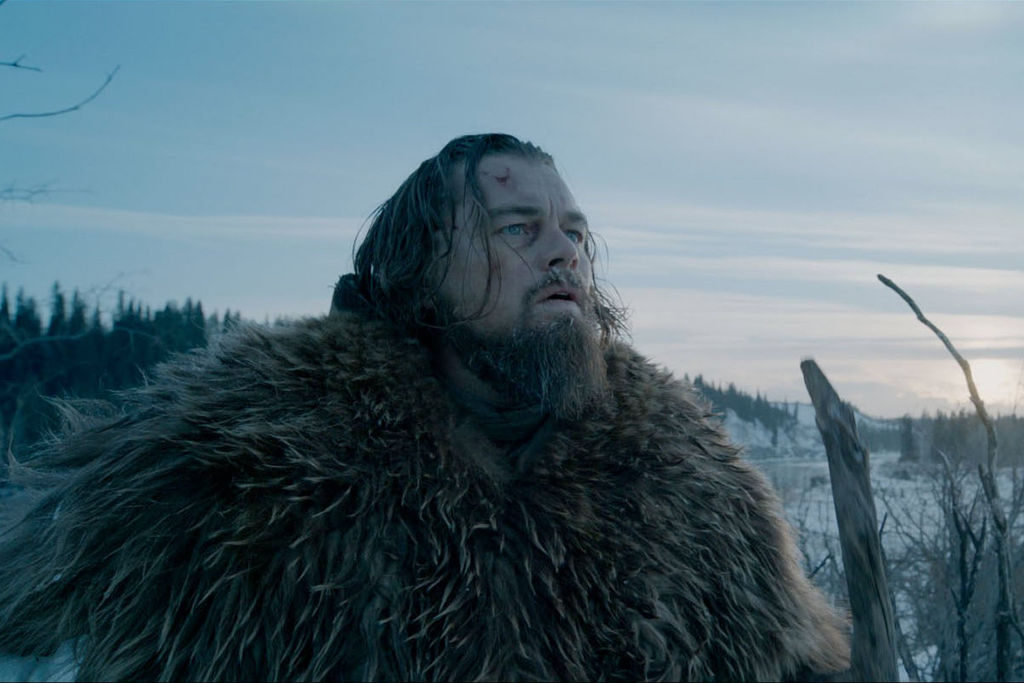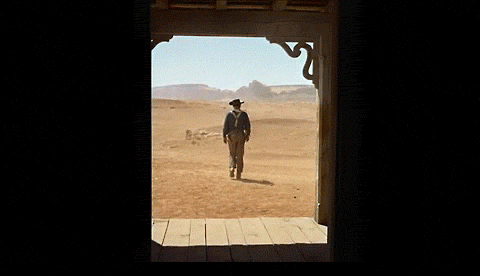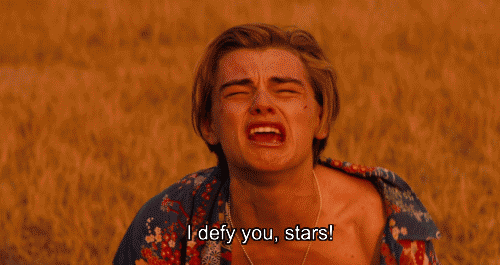‘The Revenant’ Is A Needlessly Violent, Utterly Pointless Exercise In Cinematic Nihilism
'The Revenant' doesn't deserve an ounce of the hype. Sorry, Leo.

The western is a genre that typically personifies the male ideal. Men are men, primal and tough. They’re survivors in a violent world where women are usually little more than possessions to be either rescued or used as sexual and domestic aides. Admittedly, I’m iffier on this genre of film than many others – hardly surprising given that’s a world made up predominantly by older, straight white men.
Still, even I can see the grand entertainment of John Ford’s epic The Searchers (1956) or Allan Dwan’s inventive and memorably action-packed Silver Lode (1954), which are some of the best movies ever made. Watching these and others like them today allows us to see that westerns weren’t all just violent mass entertainments, but rather canvases upon which to explore what it means to be American, and the complexities of America’s history at a time when the country was violently changing.

–
A New Vision Of The West
60 years later and Alejandro González Iñárritu is here with his own take on the genre just one year after winning multiple Oscars for Birdman. In The Revenant he spins these familiar tropes – the cross-terrain mission of rescue, the savage Native Americans, the doggedness of male pride – but with the new-fangled technological advances that modern-day audiences have come to expect from Hollywood. It’s unfortunate, then, that there’s even less going on in The Revenant‘s gruesomely bloated 156 minutes than there was in even the cheapest of genre knock-offs half a century ago. It’s simplistic and one-dimensional, but gussied up in elaborate lighting and full of actors like Leonardo DiCaprio, Tom Hardy, and Domhnall Gleason whom the internet has decided are their BFFs.
Filmed in Canada and Argentina (filming took so long that the snow melted!), its reputation of having had a difficult shoot has given it the allure of being some grand artistic achievement on the same level as Francis Ford Coppola’s Apocalypse Now (1979) or Werner Herzog’s Aguirre, the Wrath of God (1972) and Fitzcarraldo (1982). But the suffering was in service of a film that has neither the elegance of a classic western or the historical smarts and emotional depth of the best modern interpretations. It’s three hours of muddy, gruesome machismo dialled up to eleven and drowning in indecipherable grunts and growls, without anything to justify its existence beyond winning Leonardo DiCaprio an Academy Award.
–
America Revisited
Kelly Reichardt’s extraordinary Meek’s Cutuff (2011) and Tommy Lee Jones’ haunting The Homesman (2014) have recently proved that not only is it still possible to tell these frontier-times stories of America’s past without relying on such exclusionary points of view, but that it is essential. Hollywood already shifted out of the glorified shoot-’em-up style of the traditional western in the 1970s, when more contemporary examples that departed from the western blueprint began to appear. Robert Altman’s McCabe & Mrs. Miller (1971) and Clint Eastwood’s The Outlaw Josey Wales (1976) turned the genre inside out, while international directors like Sergio Leone and Jodorowsky injected the western with new grandness and weirdness and entirely original perspectives.
Strip The Revenant of its stunning cinematography from potential hat-trick Oscar winner Emmanuel Lubezki – and even that is stuff we’ve seen from him before, primarily in Terence Malick’s The New World – and it’s just stodgy, old-fashioned, and even retrograde. Even Keven Costner’s Open Range (2003), still the finest western from the past two decades, succeeded in part because it allowed its male characters to be more than just gunslingers, to have personal goals beyond revenge, and the courage to express emotions beyond anger.
Given Inarritu isn’t American, one might think he’d be an ideal candidate to tip the western on its head and look at themes, perhaps of Native American entitlements and America’s damaging history of gun violence. But that’s not the case here. It was disappointing to see women so excluded from the narrative (one is dead, the other kidnapped) and Native Americans turned once more into savage, bloodthirsty monsters. Beyond disappointing, it’s frustrating because Inarritu is a talented filmmaker, and he hasn’t put his talents to any use here beyond nihilistic abuse and personal gratification. It’s a vanity project to prove he could do it.
–
But What About Leo’s Oscar?
It’s curious that Leonardo DiCaprio winning an Oscar has become the internet’s raison d’être, considering he doesn’t typically make the sort of big-budget extravaganzas that occupy most mainstream outlet’s film coverage (certainly not since Titanic, anyway). His best work typically comes in roles that require sensitivity or boyish charm over masculine bravado: think The Aviator (2004), Wolf of Wall Street (2013) and What’s Eating Gilbert Grape (1993).
After five Oscar nominations by the age of 40 – spare a thought for Peter O’Toole, who never won despite nine nominations! – people have collectively decided that eating raw bison liver and sleeping inside a horse carcass is truly worthy of a statue, not-so-subtly suggesting that such feats of Man vs Wild masculinity are inherently worthier than more introspective or light-hearted work by Matt Damon (The Martian), Michael Fassbender (Steve Jobs) Michael B. Jordan (Creed) and other award season contenders.

Of course, this logic bleeds throughout the entire industry and the annual award season carnival. It’s what makes funding a $135 million western possible when other movies like Carol, The Danish Girl, and Joy struggle for years to get made. And why those films, and others like Inside Out, Room and Brooklyn that deal primarily with emotions, feelings, and the internalised drama of women are considered Oscar outsiders.
These tired beliefs are what lead to the likes of Rolling Stone’s Peter Travers stating Iñárritu’s film is “not for pussies” (although maybe that’s a reference to DiCaprio’s infamous Pussy Posse) and why it’s not at all surprising to see The Revenant already listed on IMDb’s sketchily compiled top 250 chart, a virtual rite of passage for any movie aimed squarely at audiences who would choose to watch three hours of men being torn apart, murdered, tortured and pillaged as opposed to, say, the dizzying lesbian romance of Carol or the continent-spanning melodrama of Brooklyn.
In 2015 it simply isn’t enough to throw technically audacious camera work at a tired story and call it a masterpiece. The Revenant looks incredible, but when it can’t even maintain its own interest in themes beyond ravenous violence why should audiences be expected to as well?
And no, Leo wasn’t raped by a bear. Go home internet, you’re drunk.
The Revenant is in Australian cinemas from today.
–
Glenn Dunks is a freelance writer from Melbourne. He also works as an editor and a film festival programmer while tweeting too much @glenndunks.